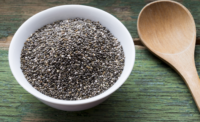The Bottom Line:
- Consumers want lower-sugar snacks and baked products.
- Balancing flavor, texture, and experience with lowered sugar is tricky.
- Honey’s popularity is increasing, thanks to its clean-label status.
Many people enjoy the sweet flavors in bakery and snack products; however, consumers are now more cognizant about the amount of sugar in the products they consume. The challenge is to deliver the same flavor, texture, and eating experience, but with less added sugar.
According to the 2022 IFIC Food and Health Survey, a steady 73% of consumers stated they are trying to limit or avoid sugars. Separately, Cargill conducted proprietary research in 2021 among 1,200 U.S. grocery shoppers and found that 62% of consumers reported they are likely to check the amount of sugar before purchasing a new product. While the Cargill research showed that consumers are more likely to check the amount of sugar versus look for a specific sweetener claim, it also found evidence that sweetener claims could influence purchases, too. Those that fared best in the Cargill study implied natural or no artificial, including “naturally sweetened” or “made with a natural sweetener.”
Naturally sweet
According to Courtney LeDrew, senior marketing manager, Cargill, “In the U.S., bakery launches with a sweetener claim were up 24.4% in 2021, nearly doubling from 2016—and increasingly, those bakers are using stevia to achieve their sugar-reduction goals. In 2021 nearly a third (29.8%) of bakery launches with a sweetener claim contained stevia. Cargill continues to expand their portfolio of sweeteners and recently added the newest system, EverSweet + ClearFlo. This new sweetening system combines their premier Reb M and Reb D stevia sweetener, EverSweet, with a natural flavor.
“The stevia leaf contains dozens of different sweet components, each with unique sweetness profiles,” explains Carla Saunders, senior marketing manager for high-intensity sweeteners, Cargill. “Two of the best tasting compounds are Reb M and Reb D. They have significantly more sweetness and less bitterness at high usage levels than the traditional Reb A.”
“However, Reb M and Reb D are quite rare in the stevia leaf; only a tiny fraction of the sweet compounds in the stevia leaf, less than 1%, are Reb M and Reb D,” Saunders continues. “That’s why Cargill and joint venture partner DSM pioneered an innovative and more sustainable approach to the production of EverSweet. We use fermentation, which requires less water, less land and results in smaller carbon footprint as compared to other stevia products produced through leaf extraction or bioconversion.”
EverSweet sweetener provides a great foundation, offering a clean, sweet flavor with few off notes. However, by adding ClearFlo natural flavor, we take this stevia product to the next level.. This new ingredient reduces the sweetness linger and provides more upfront sweetness for a temporal profile that comes even closer to that of sugar. Alongside those benefits, it also provides additional flavor modification benefits, helping to mask off notes from other ingredients in a formula, while enhancing characterizing flavors, such as chocolate, explains Saunders.
Eversweet + Clearflo has one more advantage as it supports simple label declaration. In the U.S. EverSweet may appear on ingredient statements as stevia sweetener, while ClearFlo labels as natural flavor.
This new ingredient reportedly can be used in a wide range of bakery and snack products including fillings, cookies, cakes, and snack bars.

Catherine Barry, vice president of marketing, National Honey Board, Erie, CO notes that using a natural sweetener is the cost of entry, and consumers are starting to understand there is a difference in how natural sweeteners are made. With honey, bakers and snack food manufacturers are using an ingredient made by bees in a beehive. Purchasing products with honey helps support beekeepers in their efforts to maintain healthy honeybees. It also adds an emotional element to the purchase of a product made with honey; combine that with a flavor that everyone loves, she says, and you have a powerhouse sweetener that can enhance any bakery or snack food formula.
“Although honey has been around for thousands of years, its growing use in snack foods and baked goods has led to innovative new uses. In food bars, product developers are using honey as a clean label sweetener that binds ingredients,” explains Barry. “This multi-functional use allows food manufacturers to reduce the amount of ingredients used and ensure their ingredient listing is clean. In bread formulations, bakers are taking advantage of honey’s humectancy to ensure their crumb stays moist longer. Honey also performs exceptionally well as a flavor-masker in gluten-free formulas that use non-traditional flours that may carry off flavors.”
Honey is composed of more than 20 different types of sugar with fructose and glucose being the two main sugars. Fructose has a relative sweetness of 140 compared to sucrose’s 100, therefore honey can be up to 1.5x sweeter than sugar. This can allow food manufacturers to reduce the amount of added sugar while still maintaining a comparable level of sweetness.
Sugar reduction techniques
Lindhorst notes that “the strategies to reduce added sugars in baked goods are dependent on the role that sugar plays in the finished product. While sugar is more often associated with sweetness, it is also highly functional in many formulas, influencing texture, mouthfeel, spread, structure, browning, shelf life, and more.”
“As sugar is crucial for taste and texture, there is a range of technical and sensorial challenges that must be resolved to effectively reduce sugar while meeting high consumer expectations,” states Jamie Matthews, head of customer technical support, North America, BENEO. “Bulk sugar replacement can be achieved using chicory root fiber and natural sweeteners, for example. Adding chicory root fiber provides a source of proven prebiotic fiber while reducing added sugars. Isomalt, as a polyol and thus not an ‘added sugar,’ can be used gram for gram to replace sucrose in many applications.”
Of these BENEO products, Matthews says, “BENEO’s chicory root fibers Orafti Inulin and Oligofructose, at only 2 calories per gram, are highly functional for manufacturers as they are proven prebiotic fibers, all-natural, non-GMO and deliver digestive health benefits. As soluble fibers, they are easily used in many applications.”
“By providing bulk solids, chicory root fiber can replace sugar and added sugars while maintaining the taste and texture of the final product. In terms of added health benefits, BENEO’s chicory root fibers reduce the glycemic response of foods by replacing sugar or other high glycemic carbohydrates in food formulations and at the same time enrich those foods with fiber content, thus helping consumers to bridge the fiber gap,” Matthews explains. This ingredient can be used in a wide range of baked goods including bread, bread products, soft baked goods, hard doughs, and soft doughs.
“Isomalt is the only sugar replacer derived from sugar beet and has only half the caloric value of traditional sugar. Beyond its low effect on blood glucose, it is also tooth-friendly. Isomalt provides a sweetening profile similar to sucrose but without the undesirable cooling effect of other polyols. Isomalt has 50% sweetness relative to sugar,” shares Matthews. This ingredient can be used to reduce or replace sugars in cookies, chocolate, or baked goods. It can also be combined with other high-intensity sweeteners without imparting aftertastes.
Consumers will always look to satisfy their sweet tooth. These new tools and techniques are up for the challenge and can help deliver a comparable flavor, texture, and eating experience that consumers are looking for, but with less added sugar.



